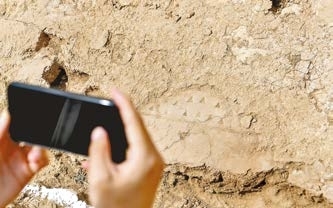
A NEWLY built museum is set to open at the 4,300-year-old Taosi relics site in North China. Over 300 items to be on display will shed light on the life and culture of ancient inhabitants. Located in Linfen City, Shanxi Province, the Taosi site is believed to be mostly likely the ruins of the capital city during the period of Yao and Shun — two sage emperors dating back more than 4,100 years. Covering an area of 2.8 million square meters, the Taosi site has seen an excavation of about 30,000 square meters since 1978. Archaeological findings indicate that the Taosi culture had reached early stages of state and civilized society. “The discovery of walled city ruins and high-grade buildings at Taosi represents a significant breakthrough,” said Wang Wei, chief expert of the project tracing the origins of Chinese civilization. Before this project, large tombs were commonly found, but city sites and high-grade buildings were rare, limiting social studies of the period, Wang noted. The Taosi city ruins site is known for its “functional zoning,” clearly delineating areas for palaces, handicraft workshops, storage, tombs, and sacrificial rituals, forming a comprehensive layout of a capital city. “The main building of the site is located centrally in the north, showcasing the architectural concept of a hidden central axis,” said Gao Jiangtao, a research fellow at the Institute of Archaeology of the Chinese Academy of Social Sciences. The central axis concept was crucial in ancient Chinese urban planning. The recently UNESCO-listed Beijing Central Axis, initially established in the 13th century, spans 7.8 km from north to south through Beijing. It stands today as the world’s longest urban axis. At Taosi, archaeologists uncovered Chinese characters on unearthed items like flat kettles, predating oracle bone inscriptions — an ancient Chinese script found on tortoise shells and animal bones. “This discovery indicates that a small minority in Taosi used characters during that era,” Wang remarked. The Taosi site presents the early evidence of an astronomical calendar in ancient China, with all 24 traditional Chinese solar terms observed from its observatory. “The observatory underscores how ancient Chinese ancestors employed advanced methods to guide agricultural development, embodying their understanding of the universe and reflecting ancient Chinese pragmatism and innovation,” said Gao. Taosi society was distinguished by cultural integration and innovation. Experts note that unearthed objects, such as painted pottery, feature designs resembling those from other regions, suggesting active absorption of external cultural elements. “Numerous archaeological findings establish Taosi as a political, economic, military, and religious center, illustrating a prime example of a state capital relic site,” Gao concluded. (Xinhua) | 
